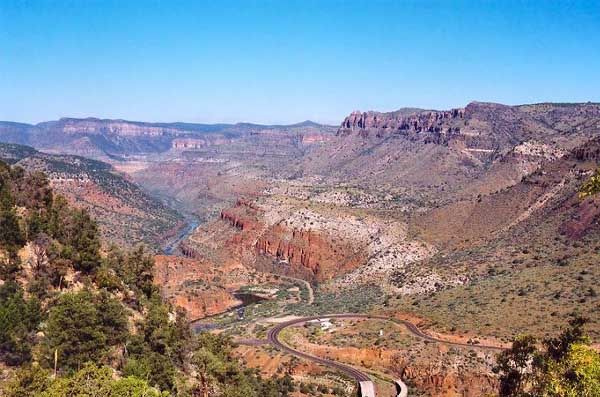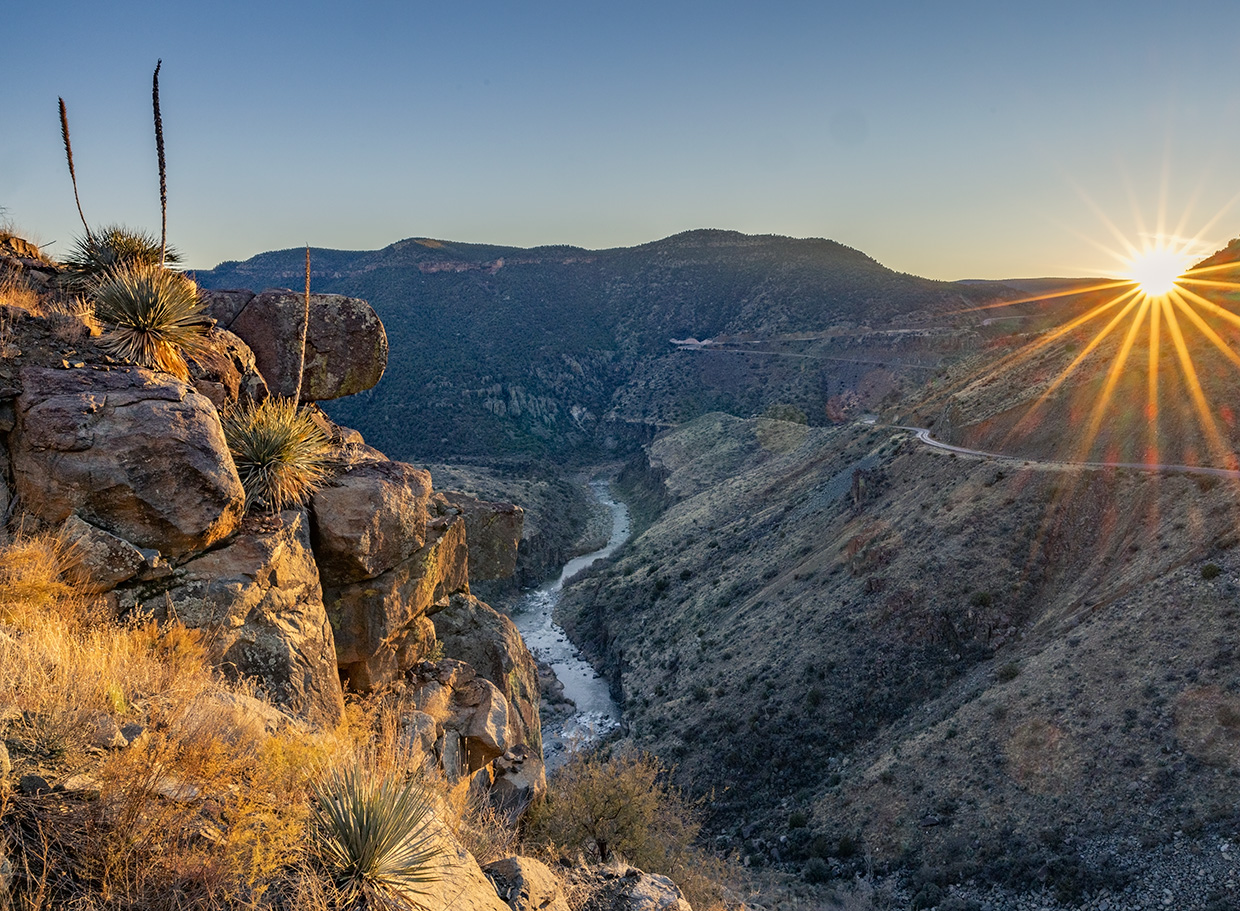
Echoes in the Chasm: The Legend of Salt River Canyon’s Fiery Past
The Salt River Canyon in Arizona is a place of stark, breathtaking beauty. Carved over millennia by the relentless flow of water, its towering cliffs, verdant oases, and hidden caves speak of ancient forces and timeless grandeur. Yet, for all its natural majesty, the canyon holds a deeper, more profound narrative – a story etched not just in stone, but in the annals of American history and legend. It is a place where the wild heart of the West beat fiercely, a stage for a brutal and pivotal chapter in the Apache Wars, a battleground whose echoes still whisper through the wind-swept gorges: the legend of a fight for survival, land, and identity.
To truly understand the legend of Salt River Canyon, one must first grasp the essence of the land itself. This is not a gentle landscape. It is raw, unforgiving, and magnificent. The Salt River, fed by snowmelt from the White Mountains, cuts a dramatic swathe through the Tonto National Forest, creating a labyrinth of deep chasms, rocky outcrops, and hidden plateaus. For centuries, this intricate terrain served as a formidable fortress and a life-sustaining haven for the Indigenous peoples of the region, primarily the Western Apache and Yavapai. They knew every crevice, every water source, every game trail. It was their home, their sanctuary, their provider – a spiritual and physical extension of their very being.
The Gathering Storm: Manifest Destiny Meets Resilient Spirit
By the mid-19th century, the relentless tide of American expansion, fueled by Manifest Destiny and the allure of gold and land, had swept across the continent. Arizona, a vast and untamed territory, became a flashpoint. The U.S. government, eager to secure its borders and open routes for settlers and miners, embarked on a policy of subjugation and forced removal of Native American tribes. For the Apache, a fiercely independent and highly skilled warrior culture, this was an existential threat. Their raids, often retaliatory or driven by the need to survive in a shrinking world, clashed violently with the encroaching American presence, igniting what would become known as the Apache Wars – a brutal, protracted conflict spanning decades.
Figures like Geronimo, Cochise, and Mangas Coloradas became legendary symbols of Apache resistance, their names striking fear into the hearts of settlers and respect into the ranks of the U.S. Army. But the conflict was far from monolithic; it was a series of skirmishes, ambushes, and campaigns across a vast and unforgiving territory. The Salt River Canyon, with its natural defenses and strategic location, inevitably became a critical theater in this desperate struggle.
General Crook and the Winter Campaign of 1872-73
The specific legend woven into the fabric of Salt River Canyon primarily stems from the audacious winter campaign of 1872-1873, led by one of the U.S. Army’s most capable and complex commanders: General George Crook. Known as "The Gray Fox" for his shrewd tactics and unassuming demeanor, Crook understood the unique challenges of fighting in Arizona’s rugged terrain. He recognized that conventional military strategies were ineffective against the elusive Apache. His innovative, and controversial, approach was to "fight Apache with Apache." He heavily relied on Apache scouts, often from rival bands or those who had already settled on reservations, to track and engage the "renegade" groups. This strategy, while militarily effective, sowed deep divisions within the Apache nation, a tragic legacy that endures to this day.
Crook’s winter campaign was designed to strike at the Apache and Yavapai bands who refused to be confined to reservations, particularly those residing in the formidable Tonto Basin, of which the Salt River Canyon formed a crucial part. These bands, often referred to collectively as the "Tonto Apaches," were among the most resistant. Crook’s plan was audacious: launch a surprise offensive during the harsh winter months, when the Apache would be less mobile, their food supplies dwindling, and their camps more vulnerable. It was a strategy of relentless pursuit and attrition, designed to break their will to resist.
The Battle of Salt River Canyon: A Clash in the Chasm
While not a single, grand pitched battle in the style of Gettysburg, the Salt River Canyon saw a series of devastating engagements during Crook’s campaign, culminating in what is often remembered as the "Battle of Salt River Canyon" or, more broadly, a pivotal moment in the "Tonto Basin Campaign." The most significant of these occurred in late December 1872.
Crook’s columns, guided by their expert Apache and Yavapai scouts, relentlessly tracked a large band of Tonto Apaches and Yavapai, estimated at around 100 warriors, along with women and children, to a seemingly impregnable stronghold within the canyon. This was no ordinary camp; it was a natural fortress, a cave system or deep rock shelter high on a cliff face, overlooking the Salt River. From this vantage point, the Apache felt secure, believing the sheer cliffs and treacherous approach would deter any attacker.

But Crook’s scouts, led by legendary figures like Al Sieber and accompanied by Captain William H. Brown’s cavalry troops, were relentless. They discovered a narrow, precipitous trail leading to the stronghold. On December 28, 1872, in a daring and brutal assault, the U.S. forces and their scouts scaled the cliffs under cover of darkness and pre-dawn light. As the sun began to illuminate the canyon, they launched a surprise attack.
What followed was a harrowing and desperate fight. The Apache, caught largely by surprise, fought with the ferocity of those defending their homes and families. They hurled rocks, fired arrows and what few firearms they possessed, trying to repel the attackers. But the element of surprise, coupled with the concentrated fire from above and below, proved overwhelming. The battle was a massacre. Estimates vary, but between 50 to 76 Apache warriors, women, and children were killed in the fighting or by falling from the cliffs in their desperate attempts to escape. Many more were captured.
Historian Dan L. Thrapp, in his comprehensive work on the Apache Wars, notes the devastating impact: "The battle was a complete victory for Crook and a severe blow to the Apache resistance." The sheer brutality of the engagement sent a chilling message throughout the remaining holdouts. The U.S. forces, having breached what was considered an unassailable redoubt, demonstrated that no place was safe.
The Aftermath and the Weight of Legend
The immediate aftermath of the Salt River Canyon battle was profound. The devastating loss of life and the capture of so many people, particularly women and children, dealt a severe blow to the Apache’s morale and their ability to continue organized resistance in the Tonto Basin. Many remaining bands, facing starvation and relentless pursuit, began to surrender. The campaign, punctuated by this pivotal victory, ultimately led to the forced relocation of thousands of Apache and Yavapai to reservations, forever altering their way of life and severing their deep connection to their ancestral lands.
But the legend of Salt River Canyon extends beyond military victory and defeat. It is a legend imbued with the tragic beauty of a people fighting for their very existence against overwhelming odds. It speaks of the incredible resilience and strategic brilliance of the Apache warriors, who for so long defied a technologically superior army in their native land. It also highlights the grim realities of frontier warfare, the difficult choices made by commanders like Crook, and the heartbreaking divisions within Indigenous communities forced to choose sides.
Today, visiting the Salt River Canyon is to step into a living legend. The wind whistling through the gorges seems to carry whispers of the past – the shouts of warriors, the crack of rifles, the cries of the fallen. The ancient caves and hidden ledges are silent witnesses to a desperate struggle. It’s a place that forces contemplation on the cost of conquest, the enduring spirit of Native American peoples, and the complex, often painful, narrative that forged the American West.
Enduring Echoes: A Call to Remember
The legend of Salt River Canyon serves as a potent reminder that American history is not a monolithic tale of triumph, but a rich tapestry woven with threads of heroism and tragedy, progress and profound loss. It challenges us to look beyond the romanticized myths of the Old West and confront the brutal realities faced by those whose lands were taken.
As the sun sets over the canyon, painting the cliffs in hues of fire and shadow, one can almost feel the presence of those who fought and died there. The canyon, in its stoic grandeur, holds these stories, not as mere historical footnotes, but as vital, living legends. They remind us of the courage on both sides, the immense sacrifices, and the indelible mark left on the land and its people. The Salt River Canyon is more than a geological wonder; it is a sacred space, a monument to a pivotal chapter in the making of America, a legend that demands to be remembered, understood, and honored. Its echoes call not for judgment, but for remembrance, for empathy, and for a deeper appreciation of the complex and often conflicted legends that define the very soul of America.

